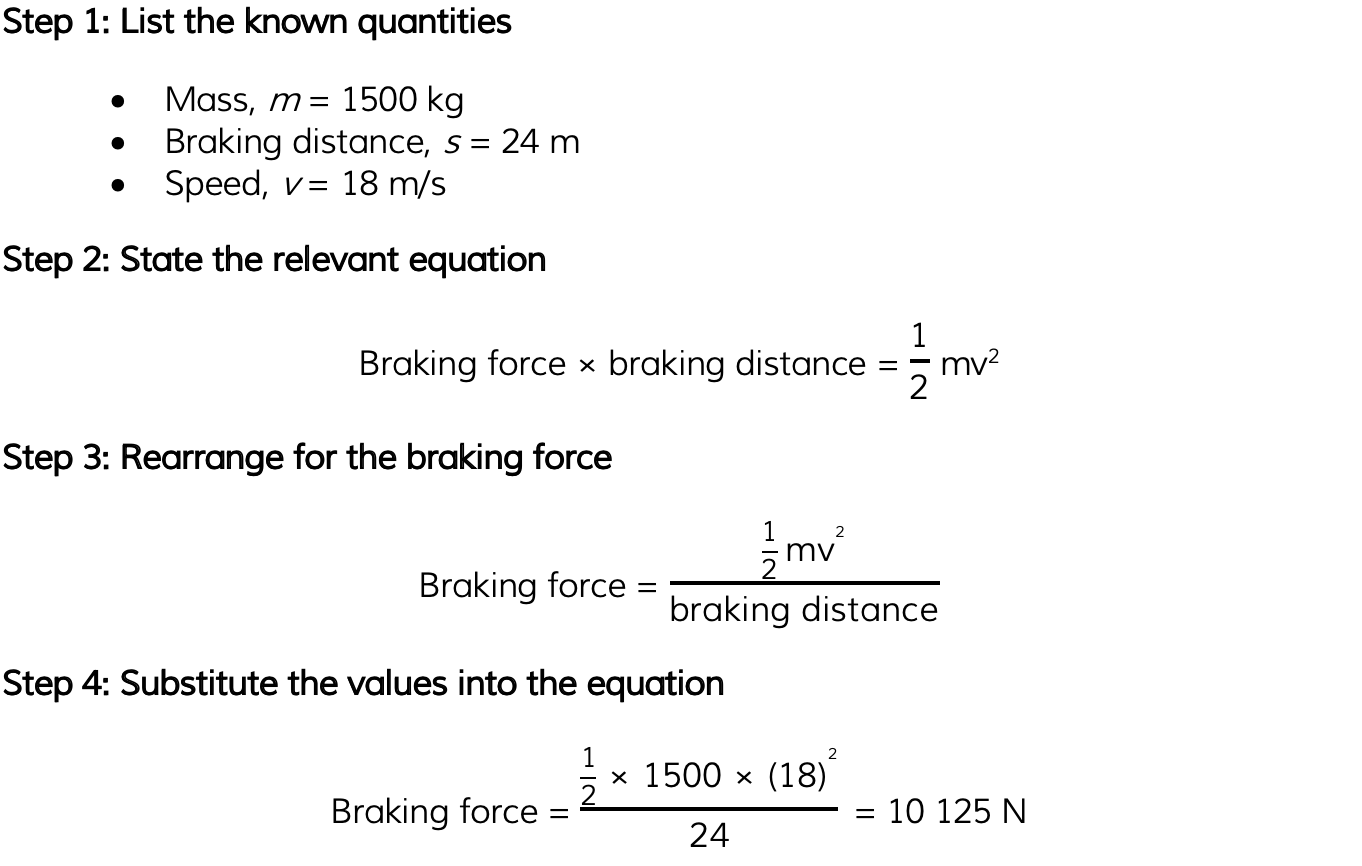Estimating Decelerating Forces (AQA GCSE Combined Science: Trilogy): Revision Note
Estimating Decelerating Forces
Higher Tier Only
The work done by the brakes when a vehicle slows to a halt is given by the following equation:

This equation shows the work done (energy transferred) by the brakes on the wheels of a car
This equation shows that:
The work done is the transfer of kinetic energy
The braking distance is proportional to the speed squared (if the speed is doubled, the distance increases 4 times)
We can use this equation to estimate the decelerating forces required for a typical vehicle moving at everyday speeds
Worked Example
At 18 m/s (40 mph) the braking distance of a typical car of mass 1500 kg is about 24 m. Use this information to estimate the braking force for a typical car.
Answer:

Examiner Tips and Tricks
You should be able to deduce from the equation that the braking distance is proportional to the vehicle's speed2. Note, this actually doesn't apply at very high speeds because the brakes get hot and become less effective. This reduces the braking force, causing the braking distance to increase even further.

You've read 0 of your 5 free revision notes this week
Sign up now. It’s free!
Did this page help you?
